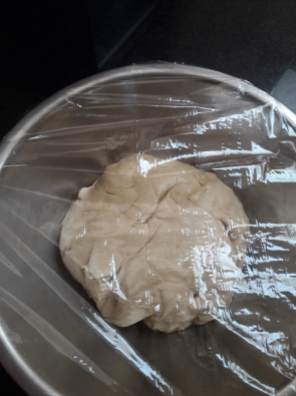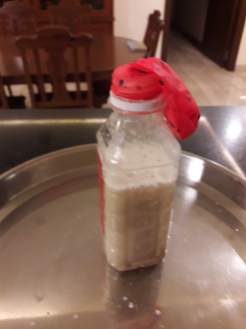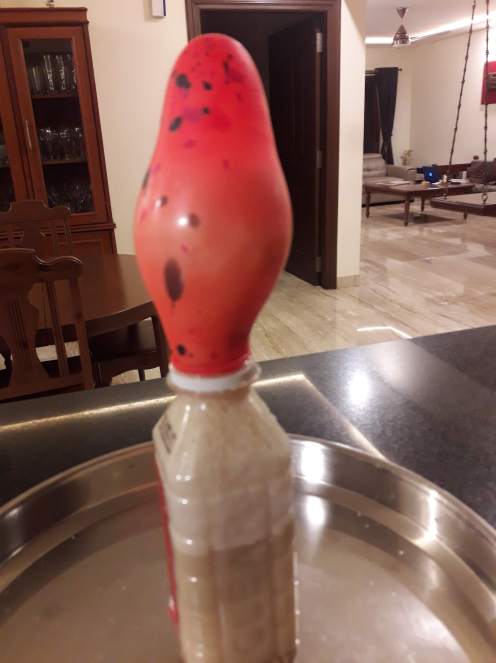I wonder if I can add chemist to my profile which includes baker, cook, teacher. While writing the blog post on pizza, the teacher in me started wondering about the science behind making pizza. This morning I made appam and stew and seeing the small holes in the appam, I was explaining why it had those holes.
In every south Indian house, for generations, (before dosa and idli batters came in bags in the cold section of a supermarket), cooks ground the batter and left it overnight for it to ferment. Every Indian household made yogurt using a starter, heating the milk to the right temperature, adding the starter, keeping it in a draught-free warm place for it to set. That is chemistry.
Most kids think of chemistry as blowing up stuff; hardly thinking that cooking and baking involves chemistry. Yes, we bakers and home cooks do not wear lab coats and look cool in safety glasses, but we do make chemical reactions happen and know how and why some things work. One of the books, I love and learn from is the book by Robert Wolke, professor of Chemistry and author of the book, What Einstein Told His Cook. He explains the chemistry and the concepts behind cooking in the kitchen. He encourages asking ‘Why’ something happens. Encourage your child/student to ask questions – the scientific process starts with a question!

Since I was baking pizza and making appam today, I decided to look more closely at yeast.
What is yeast?
As I taught my 5th graders, yeast is unicellular fungus (microbe). It is a living organism.
What is the Scientific Name of Baker’s Yeast?
Saccharomyces cerevisiae. It means ‘sugar-eating fungus’
Where are they used?
They are used to make bread and beer amongst other things. They are also used to mold cheese and make antibiotics. Yeast is studied extensively in biology as an ideal experimental organism.
What do they feed on?
The yeast is dormant till it comes in contact with a liquid. Yeast loves sugar in various forms (sucrose, fructose, glucose, maltose). That is why when yeast is used, a teaspoon of sugar is added to the yeast along with lukewarm water. The yeast, however, continues to eat the sugar in the dough. Fermentation is the process of breaking down of the starch into sugars for their energy.
Why are they used in baking and other cooking?
The by-product is carbon dioxide (CO2) and ethyl alcohol or lactic acid which it gives out and is very useful for bread. When the carbon dioxide cannot escape from the dough because it is elastic and stretchable. This makes the dough rise and cause air bubbles in the dough. The ethyl alcohol produced during this process has a particular aroma and taste which we can taste in the bread.
Perfect Temperature
The optimum temperature for yeast to grow is 27º – 32º
This is what my pizza dough looked like from proofing of the yeast and the rising of the dough:
Fun Fact:
It takes 20,000,000,000 (twenty billion) yeast cells to weigh one gram.
Yeast Experiment
Note to parents and teachers: Before you explain to your child/student what yeast is and what it does. let them conduct the experiment. This is a simple experiment which can be done in groups. Let the child hypothesize what could happen. Different groups could change the amount of yeast or sugar or amount or temperature of water and hypothesize what could happen. Let them feel the wonder and awe while watching the balloon inflate. Then this leads to inquiry and learning.
A fun experiment to do with the kids to show the process. This is a slow process which takes around 20 – 30 minutes. So you start it and watch it every 5 minutes. (I did this experiment one evening at home – the balloon was inflating even after I threw it in the dustbin).
In a bottle, add 1 tbsp yeast (active dry yeast), 1 tbsp sugar, ½ cup lukewarm water and place a balloon over the bottle. Observe what happens.
Children can change the amount of yeast, sugar, and temperature of water and hypothesize what may happen. (changing one condition at a time)
Why does the balloon inflate?
The yeast feeds on the sugar and produces carbon dioxide. As there is no place to go, the gas fills the balloon and the balloon inflates. The very same process that happens in bread when the dough rises. The carbon dioxide fills a lot of balloon-like bubbles in the dough which gives the bread an airy texture.
Sources:
https://www.stufftoblowyourmind.com/blogs/yeast-bread.htm
https://www.exploratorium.edu/cooking/bread/activity-yeast.html





















